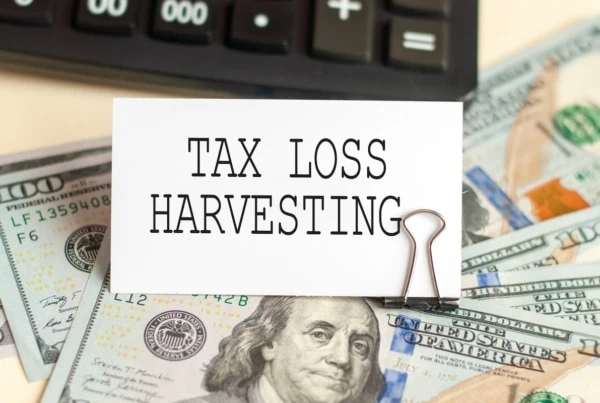Table of Contents
What is the 2018 Tax Reform and What Did it Accomplish?
When Congress debated changing the tax code in 2017, the intended spirit was to simplify the tax planning process for the individual tax payer. The primary instrument for enacting this change was the increase in the standard deduction. However, the tax code also discontinued or altered a number of common tax deductions and tax credits, changed the economics behind home ownership in some parts of the country, eliminated personal exemptions, and shifted tax brackets and rates, among other things. The tax reform bill also included major changes for corporate taxes. The new tax rules benefited businesses immensely by receiving a significant drop in the federal corporate tax rate. The 2017 corporate tax rate stood at 35% but dropped to 21% in 2018 onward. For individuals, the tax reform law made itemizing deductions harder and pushed many more instead to use a larger standard deduction. In theory, the standard deduction under the new tax plan would make far fewer individuals qualify for itemizing deductions and make tax planning simpler. My wife and I barely managed to itemize, with $50 of deductions above the threshold taken. For reference, to itemize your deductions, you must exceed the standard deduction. Therefore, if you raise the standard deduction bar, fewer will qualify to itemize. For a view of how the standard deduction changed under tax reform in 2018, have a look at the standard deduction table below.| Filing Status | 2020 Tax Year | 2019 Tax Year |
|---|---|---|
| Single | $12,400 | $12,200 |
| Head of Household | $18,650 | $18,350 |
| Married, Filing Jointly | $24,800 | $24,400 |
| Married, Filing Separately | $12,400 | $12,200 |
How did Tax Reform Change the 529 College Savings Plan?
A 529 college savings plan is a tax-advantaged investment account specifically designed to encourage saving funds for qualified future higher-education costs. These qualified expenses include tuition, fees and room and board. Money in these accounts invest and grow tax free if used for qualified educational expenses.Old Rule:
529 college savings plan funds could only be used on qualified higher education expenses.New Rule (effective Jan. 1, 2018):
Count another victory for wealthy families who can now use funds from 529 savings plans for private K-12 schooling for their children. The tax benefits from this account now extends to eligible education expenses for all elementary or secondary public, private, or religious schools. The new rule allows the plan holder to withdraw a maximum of $10,000 per year per student for education costs.- Backer allows you to invest your educational savings tax-free in a 529 plan and also allows for family and friends to help you to save more.
- Use low-cost index funds to invest in different asset classes, including stocks and bonds.
How did Tax Reform Change the Affordable Care Act (Obamacare) Individual Mandate?
The Affordable Care Act (ACA), more commonly referred to as Obamacare, passed Congress in 2009. The law offered access to a national health insurance exchange, standardized levels of insurance benefits, tax credits to subsidize health insurance for certain income thresholds, among many other changes to the existing healthcare system.Old Rule:
In its original form, the ACA required every individual to carry health insurance coverage. Those who chose not to carry coverage and did not qualify for an exemption faced a range of tax penalties, depending on income.New Rule (effective Jan. 1, 2019):
As of Jan. 1, 2019, there is no more individual mandate. As such, there are no more penalties for not purchasing health insurance. The argument behind this removal is it will decrease spending on tax subsidies offered by the law (if you aren’t required to have health insurance, the government isn’t required to pay tax credits to people who don’t carry it) and balance the rise in premiums seen for ACA enrollees. However, absent a mandate to carry health insurance, many industry watchers caution young invincibles on high deductible health plans won’t sign up for health coverage. As a result of these individuals being less likely to carry insurance, these experts foresee likely premium increases for those who carry insurance coverage from the ACA marketplace. If these premium increases occur, some insurers could leave the marketplace altogether. This drop of the insurance mandate is a formidable blow to the primary thrust of the Affordable Care Act. Related:- What is an HSA? The Ultimate Tax Shelter to Save Money
- Financial Independence is the Millennial Retirement We Deserve
How did 2018 Tax Reform Affect Alimony?
Alimony is the payment made from one ex-spouse to another in support of their living expenses. Tax reform reversed who could take a tax deduction on these payments.Old Rule:
The person paying alimony could deduct the payments from their income while the person receiving must include them in their taxable income.New Rule (effective Jan. 1, 2019):
No longer does the person making the payments get to deduct them from his or her income. Now, the recipient does not claim them as taxable income. Any divorce proceedings or separation agreements which were signed or modified before January 1, 2019 were not affected. This rule change becomes effective in 2019. As you can imagine, if divorce proceedings weren’t contentious enough, many likely attempted to fast track (or delay) to take advantage of this change.What did Tax Reform Change about the Child Tax Credit?
The child tax credit was designed to offset costs associated with raising children each year. The attractive nature of the credit came in the form of a dollar-for-dollar credit against your tax liability as opposed to a deduction which reduces your taxable income.Old Rule:
The child tax credit was available for each child under the age of 17 for $1,000. The tax credit is reduced by $50 for each $1,000 the taxpayer earns over certain thresholds. The tax credit is also subject to phase-outs starting at a modified adjusted gross income (AGI) over $75,000 for single taxpayers and heads of household, $110,000 for married couples filing jointly and $55,000 for married couples filing separately.New Rule (effective Jan. 1, 2018):
Effectively, the child tax credit doubled per child up to $2,000 under tax reform in 2018. Up to $1,400 of the child tax credit received is a refundable tax credit (offsets the balance of your tax liability and any excess comes to you via a tax refund). The new rule also includes a $500 nonrefundable tax credit per dependent other than a qualifying child. Phaseouts also apply to the new child tax credit. For AGI greater than $200,000 (single taxpayers) and $400,000 for married couples, filing jointly, the phaseout reduces the child tax credit. Related:- Earned Income Tax Credit: What You Need to Know
- How the Investment Tax Credit & Other Incentives Drive Solar Energy
How did the 2018 Tax Reform Change Taxes for Homeowners?
Tax reform implemented multiple changes for homeowners, none for the better. Primarily, it changed the treatment of deductions many claim related to homeownership and the hurdle to surpass for itemizing (higher standard deduction).Old Rule (Mortgage Interest Deduction):
The higher standard deduction created not only a higher hurdle to qualify for the mortgage interest deduction, but tax reform also lowered the levels of mortgage principal and associated interest expense which qualifies for deductibility. In the past, you could deduct the mortgage interest associated with the first $1 million of your mortgage and the interest associated with the first $100,000 of a home equity loan (assuming the funds are used for qualifying home improvements).New Rule (effective Jan. 1, 2018)
Tax reform changed this only to allow the interest expense associated with the first $750,000 for taxpayers who are married and file jointly, and $375,000 for single taxpayers. If you originated a mortgage in 2018 above this threshold, it gives you the incentive to pay off your mortgage faster. It is worth noting this limit only applies to new loans originated after December 15, 2017. Preexisting mortgages are grandfathered under the old limits. And home equity loan interest also is still deductible if the loan is used to “buy, build or substantially improve” the home which secures the loan. The IRS provided an example to illustrate these rules to simplify the understanding. If a taxpayer took out a $500,000 mortgage to buy a home valued at $800,000 and subsequently took out a home equity loan for $250,000 to build an addition on the home, the interest associated with both the mortgage and the home equity loan are deductible. This is because the two loans, in aggregate, combine for the maximum of $750,000. If the taxpayer uses the home equity line of credit (HELOC) for personal expenses other than qualified home expenses, that interest from the loan is not deductible. Given the higher watermarks of these amounts, higher-income individuals located in non-coastal areas and those in high cost of living areas are disproportionately impacted.Old Rule (higher standard deduction hurdle):
As stated previously, the standard deduction increase made it harder to qualify for itemizing deductions. Many expenses will be insufficient to itemize and forces the homeowner into the standard deduction because it provides better tax relief.New Rule:
Many individuals will not be able to claim these tax deductions against their federal adjusted gross income. In some cases, they may still apply against state income tax adjusted gross income. Simply put, 2018’s tax reform has made it less-advantageous to be a homeowner from a tax point of view. Related: Should I Pay Off My Mortgage Early?How did the Home Office Tax Deduction Change?
For many years, many counted on home office tax deductions to reduce their taxable income. Expenses related to maintaining a workspace helped employees who worked at least part-time from home and the self-employed pay less in taxes in each year. Tax reform in 2018 changed the treatment of home office expenses for Form W-2 employees, however, self-employed individuals retained this benefit and may still deduct qualified home office expenses from their taxable income.Old Rule:
Any expense an employee or self-employed person pays related to a home office used regularly and exclusively for their business, regardless of whether the space is rented or owned, can count as a tax write off. However, taxpayers claiming this home office tax deduction need to be mindful because it is discretionary how the taxpayers chooses to allocate these expenses. If expenses are toward a space used for both personal and professional use, the taxpayer must use his or her best judgement allocating the expenses appropriately for tax purposes.New Rule:
Tax reform changed the rule to allow only self-employed persons to claim the home office tax deduction. Employees who work from home, even part-time or as a portion of their full-time position, can no longer claim the home office tax deduction. Further, beginning in 2013, and continued under tax reform in 2018, there are two methods for calculating your home office deduction: the standard method and the simplified method. Unlike other elections in the tax code, you do not need to use the same method each year. The standard method requires you to calculate your total home office expenses each year and use this amount as your tax deduction. The simplified method allows you to multiply $5 per square foot of home used for your business with a maximum allowed amount of 300 square feet. This method might be more efficient if you don’t have time to track your qualified home office expenses for a self-employment tax deduction or understand how to use a MACRS depreciation table. However, these rates can vary by year depending on the IRS’s wishes and might not be as rewarding as the standard method. The decision is yours about whether you prefer one method to the other. In either case, you can prepare your taxes with TurboTax to minimize your tax bill.- Lower tax rates: The tax law kept the seven existing federal income tax brackets. However, it lowered the tax rate of every bracket except for two. This reduces the amount of money you pay on each additional dollar of income by varying amounts.
- Different taxable income ranges: The law also changed the 2018 income tax brackets for filers. Meaning, the income ranges applicable to each tax rate either widened or narrowed, depending on the level of income.







